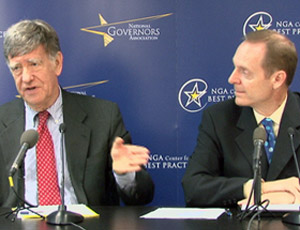The fiscal year starting July 1 will be another tough one for states, with more spending cuts expected, says a new survey by the National Governors Association and National Association of State Budget Officers.

The groups' latest biannual “Fiscal Survey of the States,” released June 3, says that for fiscal 2010, which ends for 46 states on June 30, their total general-fund expenditures will be down by an estimated 6.8%, to $612.9 billion.
For 2011, governors’ proposed budgets are forecasting a 3.6% pickup in spending, but that would still leave the total $52 billion below 2008’s level.
The NGA-NASBO report shows that 11 states have proposed cuts in transportation spending in fiscal 2011. That follows reductions imposed by 20 states in 2010.
The study focuses on states’ general funds, not their capital budgets. But the fiscal squeeze is affecting public works, says Scott Pattison, NASBO executive director.
“We’re already seeing<and it’s no surprise<[states are] really having to cut everywhere and that includes infrastructure,” he says.
Pattison says that, in the past, states’ ability to fund public works through the bond markets has offset some of the cutbacks in their direct capital spending. But he adds that “this has been such a long and deep recession and the cuts have been so significant, that infrastructure has been hit in a sense."
Billions of dollars in American Recovery and Reinvestment aid for highways and other programs have helped states, Pattison says. But he says, “I think that the long term is what states are worried about right now.”
Pattison says, “They don’t see sufficient revenues making up for the recovery act and so they are very concerned, particularly about [public-works] maintenance, but also the ability to have the funds going forward, for particularly the large infrastructure projects.
Thanks to tax increases and spending reductions in 2009 and 2010, states have been able to narrow their collective budget gap by $169 billion. But they still have a $127-billion shortfall to address.
Raymond Scheppach, NGA executive director, says that as states look at ways to chip away further at that budget gap, they will be reluctant to raise taxes and will focus on trimming spending.
“And it’s going to be real tough,” Scheppach adds, “because states have already gotten the low-hanging fruit and the medium-hanging fruit and the difficult fruit.”
A they weigh areas to cut, Scheppach says states are likely to look at Medicaid reimbursement rates and also further personnel reductions.


Post a comment to this article
Report Abusive Comment